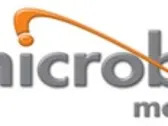Artificial intelligence (AI) has revolutionized various industries in recent years, and its applications are constantly expanding. One of the most significant areas where AI is expected to make a substantial impact is in physical systems, such as robots and autonomous vehicles (AVs). To facilitate this growth, Nvidia, a leading AI chipmaker, has introduced Nvidia Cosmos, a platform designed to advance the development of physical AI systems.
The Need for Physical AI Systems
Developing physical AI models is a complex and costly process. It requires vast amounts of real-world data and extensive testing to ensure that these models are accurate and efficient. This can be a significant challenge for many developers, especially those in emerging markets or with limited resources. To overcome this hurdle, Nvidia has created Cosmos, a platform that integrates state-of-the-art technologies to simplify the development process.
Key Components of Nvidia Cosmos
Nvidia Cosmos is built on several key components:
- Generative World Foundation Models (WFMs): These models enable developers to generate massive volumes of photorealistic, physics-based synthetic data. This approach allows them to train and evaluate their existing models more efficiently.
- Advanced Tokenisers: Nvidia has integrated advanced tokenisers into the Cosmos platform. These tokenisers help improve the accuracy and efficiency of AI models by enabling them to better understand and process human language.
- Guardrails: The Cosmos platform includes guardrails, which are designed to ensure that AI models operate safely and securely. These guardrails can detect potential issues before they occur, preventing accidents or other problems.
- High-Performance Video Processing Pipeline: Nvidia has also integrated a high-performance video processing pipeline into the Cosmos platform. This enables developers to process and analyze large amounts of visual data more efficiently.
Benefits of Using Nvidia Cosmos
The benefits of using Nvidia Cosmos are numerous:
- Simplified Development Process: Cosmos provides developers with a simplified approach to generating massive volumes of photorealistic, physics-based synthetic data.
- Improved Efficiency: By integrating advanced technologies, Nvidia has created a platform that enables developers to train and evaluate their existing models more efficiently.
- Customization Options: Developers can customize their models by fine-tuning Cosmos WFMs, which allows them to tailor their AI solutions to specific needs and applications.
Open Model Licence
To accelerate the progress of the robotics and AV sectors, Nvidia has made its Cosmos models available under an open model licence. This means that developers can access and use these models without having to pay licensing fees. The initial models are available via the Nvidia API catalogue or the full set of models and fine-tuning framework from Nvidia NGC or Hugging Face.
Early Adopters
Nvidia has already partnered with several leading robotics and automotive companies, including:
- 1X
- Agile Robots
- Agility
- Uber (a ridesharing platform)
These early adopters have recognized the potential of Nvidia Cosmos to revolutionize the development of physical AI systems.
Quotes from Nvidia Founder and CEO Jensen Huang
Jensen Huang, founder and CEO of Nvidia, has stated: "The ChatGPT moment for robotics is coming. Just as large language models are transforming AI, world foundation models will be pivotal to the evolution of robots and AVs."
He also noted: "However, not all developers have the expertise or resources to train their own models. We created Cosmos to democratise physical AI and make general robotics accessible to every developer."
Nvidia’s Acquisition of Run:ai
In December 2024, Nvidia completed the acquisition of Israeli AI company Run:ai after undergoing antitrust scrutiny in a deal valued at $700m. This acquisition has strengthened Nvidia’s position in the AI market and has provided the company with valuable expertise and resources to develop its Cosmos platform.
Conclusion
Nvidia Cosmos is a game-changing platform that has the potential to revolutionize the development of physical AI systems. By providing developers with a simplified approach to generating massive volumes of photorealistic, physics-based synthetic data, Nvidia has created a platform that enables them to train and evaluate their existing models more efficiently.
The benefits of using Nvidia Cosmos are numerous, including improved efficiency, customization options, and an open model licence. The company’s early adopters have already recognized the potential of this platform to accelerate the progress of the robotics and AV sectors.
With its acquisition of Run:ai, Nvidia has strengthened its position in the AI market and has provided itself with valuable expertise and resources to develop its Cosmos platform further.



